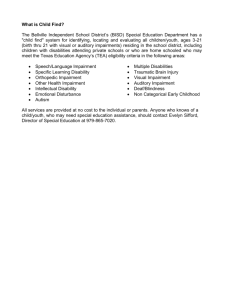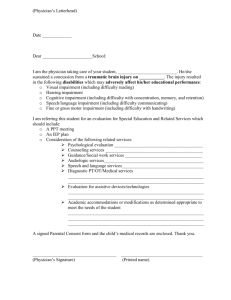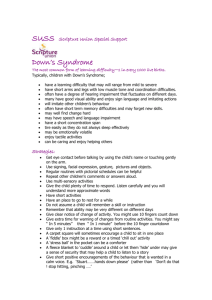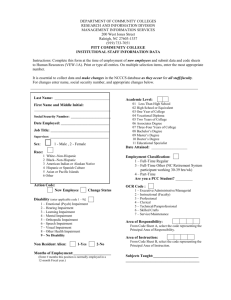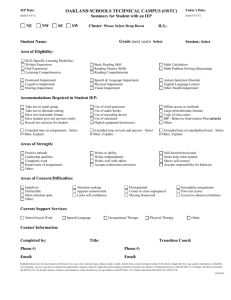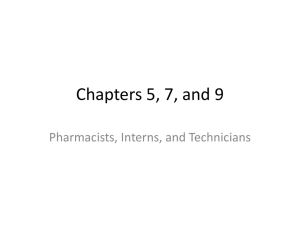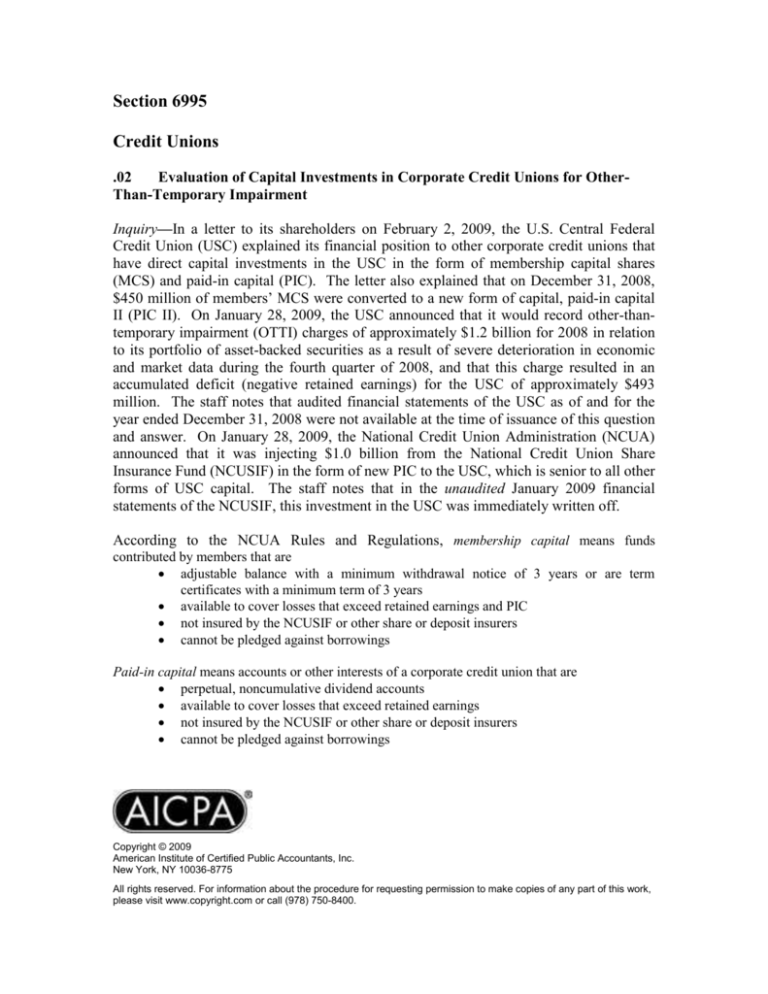
Section 6995
Credit Unions
.02
Evaluation of Capital Investments in Corporate Credit Unions for OtherThan-Temporary Impairment
Inquiry—In a letter to its shareholders on February 2, 2009, the U.S. Central Federal
Credit Union (USC) explained its financial position to other corporate credit unions that
have direct capital investments in the USC in the form of membership capital shares
(MCS) and paid-in capital (PIC). The letter also explained that on December 31, 2008,
$450 million of members’ MCS were converted to a new form of capital, paid-in capital
II (PIC II). On January 28, 2009, the USC announced that it would record other-thantemporary impairment (OTTI) charges of approximately $1.2 billion for 2008 in relation
to its portfolio of asset-backed securities as a result of severe deterioration in economic
and market data during the fourth quarter of 2008, and that this charge resulted in an
accumulated deficit (negative retained earnings) for the USC of approximately $493
million. The staff notes that audited financial statements of the USC as of and for the
year ended December 31, 2008 were not available at the time of issuance of this question
and answer. On January 28, 2009, the National Credit Union Administration (NCUA)
announced that it was injecting $1.0 billion from the National Credit Union Share
Insurance Fund (NCUSIF) in the form of new PIC to the USC, which is senior to all other
forms of USC capital. The staff notes that in the unaudited January 2009 financial
statements of the NCUSIF, this investment in the USC was immediately written off.
According to the NCUA Rules and Regulations, membership capital means funds
contributed by members that are
adjustable balance with a minimum withdrawal notice of 3 years or are term
certificates with a minimum term of 3 years
available to cover losses that exceed retained earnings and PIC
not insured by the NCUSIF or other share or deposit insurers
cannot be pledged against borrowings
Paid-in capital means accounts or other interests of a corporate credit union that are
perpetual, noncumulative dividend accounts
available to cover losses that exceed retained earnings
not insured by the NCUSIF or other share or deposit insurers
cannot be pledged against borrowings
Copyright © 2009
American Institute of Certified Public Accountants, Inc.
New York, NY 10036-8775
All rights reserved. For information about the procedure for requesting permission to make copies of any part of this work,
please visit www.copyright.com or call (978) 750-8400.
How should a corporate credit union evaluate its MCS and PIC in the USC for OTTI at
December 31, 2008? Similarly, how should a natural person credit union evaluate its
MCS and PIC investments in other corporate credit unions for OTTI at December 31,
2008?
Reply—The staff believes the following authoritative literature is helpful in making that
evaluation.
Financial Accounting Standards Board (FASB) Statement No. 115, Accounting for
Certain Investments in Debt and Equity Securities, addresses equity securities that have
readily determinable fair values. As there is no active market for MCS or PIC
investments, FASB Statement No. 115 would not apply. Accounting Principles Board
(APB) Opinion No. 18, The Equity Method of Accounting for Investments in Common
Stock, generally requires that investments in common stock that result in the investor
having the ability to exert significant influence over the issuer be accounted for using the
equity method. Otherwise, the cost method would apply. APB Opinion No. 18 also
indicates that a series of operating losses of an investee or other factors may indicate that
a decrease in value of the investment has occurred, which is other than temporary and
should accordingly be recognized, and reference is then made to FASB Staff Position
(FSP) FAS 115-1, The Meaning of Other-Than-Temporary Impairment and Its
Application to Certain Investments. MCS and PIC do not represent common stock
investments; however, the concepts of APB Opinion No. 18 can be considered.
According to the aforementioned USC letter to corporate credit unions, the ownership of
MCS or PIC, or both, by any particular corporate credit union would not provide it the
opportunity to exert significant influence over the USC, particularly given “one member,
one vote.” As such, it appears appropriate to consider investments in MCS and PIC cost
method equity investments and that evaluation for impairment by corporate credit unions
is required.
Although FASB Statement No. 115 does not specifically apply to MCS and PIC, FSP
FAS 115-1 addresses issues of impairment not covered in FASB Statement No. 115 and
includes within its scope cost method equity investments. Paragraph 4c of FSP FAS 1151 states that the guidance in this FSP is applicable for investments in equity securities that
are not subject to the scope of FASB Statement No. 115 and not accounted for under the
equity method pursuant to APB Opinion No. 18 and related interpretations (cost-method
investments). Paragraph 10 of FSP FAS 115-1 provides guidance on how to determine
impairment on such cost-basis investments without readily determinable fair values.
Step 1 of the impairment framework detailed in FSP FAS 115-1 requires an investor to
determine whether or not the fair value of the investment is less than its cost basis.
Paragraph 10 of FSP FAS 115-1 regarding cost-method investments (that have no readily
determinable fair value) includes the following:
Because the fair value of cost-method investments is not readily determinable, the
evaluation of whether an investment is impaired shall be determined as follows:
2
a. If an investor has estimated the fair value of a cost-method investment (for
example, for disclosure under FASB Statement No. 107, Disclosures about
Fair Value of Financial Instruments), that estimate shall be used to determine
if the investment is impaired for the reporting periods in which the investor
estimates fair value. If the fair value of the investment is less than its cost,
proceed to Step 2.
b. For reporting periods in which an investor has not estimated the fair value of a
cost-method investment, the investor shall evaluate whether an event or
change in circumstances has occurred in that period that may have a
significant adverse effect on the fair value of the investment (an "impairment
indicator"). Impairment indicators include, but are not limited to:
1. A significant deterioration in the earnings performance, credit rating,
asset quality, or business prospects of the investee
2. A significant adverse change in the regulatory, economic, or
technological environment of the investee
3. A significant adverse change in the general market condition of either
the geographic area or the industry in which the investee operates
4. A bona fide offer to purchase (whether solicited or unsolicited), an
offer by the investee to sell, or a completed auction process for the
same or similar security for an amount less than the cost of the
investment
5. Factors that raise significant concerns about the investee's ability to
continue as a going concern, such as negative cash flows from
operations, working capital deficiencies, or noncompliance with
statutory capital requirements or debt covenants.
FASB Statement No. 157, Fair Value Measurements, defines fair value as the price that
would be received to sell an asset or paid to transfer a liability in an orderly transaction
between market participants at the measurement date. The staff understands that, in
practice, fair value disclosures under FASB Statement No. 107 for MCS and PIC have
generally reflected redemption values (at par), and have recognized that such investments
were interest-earning at assumed market rates of interest. This is similar to historical fair
value disclosures for investments in Federal Home Loan Bank stock.
Paragraph 13 of FSP FAS 115-1 states the following:
When the fair value of an investment is less than its cost at the balance sheet date
of the reporting period for which impairment is assessed, the impairment is either
temporary or other than temporary. An investor shall apply other guidance that is
pertinent to the determination of whether an impairment is other than temporary,
such as paragraph 16 of Statement 115 (which references SEC Staff Accounting
Bulletin Topic 5M, Other Than Temporary Impairment of Certain Investments in
Debt and Equity Securities), paragraph 6 of Opinion 18, and EITF Issue No. 9920, “Recognition of Interest Income and Impairment on Purchased and Retained
3
Beneficial Interests and Beneficial Interests in Securitized Financial Assets
[sic]."1
The staff notes that entities holding MSC or PIC should first determine whether fair
values are believed to be less than the cost bases of the respective holdings at the balance
sheet date. If so, such impairment is assessed as either temporary or other than temporary.
In this regard, SEC Staff Accounting Bulletin Topic 5M indicates the following:
The value of investments in marketable securities classified as either availablefor-sale or held-to-maturity may decline for various reasons. The market price
may be affected by general market conditions which reflect prospects for the
economy as a whole or by specific information pertaining to an industry or an
individual company. Such declines require further investigation by management.
Acting upon the premise that a write-down may be required, management should
consider all available evidence to evaluate the realizable value of its investment.
There are numerous factors to be considered in such an evaluation and their
relative significance will vary from case to case. The staff believes that the
following are only a few examples of the factors which, individually or in
combination, indicate that a decline is other than temporary and that a write-down
of the carrying value is required:
a. The length of the time and the extent to which the market value has been
less than cost;
b. The financial condition and near-term prospects of the issuer, including
any specific events which may influence the operations of the issuer such
as changes in technology that may impair the earnings potential of the
investment or the discontinuance of a segment of the business that may
affect the future earnings potential; or
c. The intent and ability of the holder to retain its investment in the issuer for
a period of time sufficient to allow for any anticipated recovery in market
value.
Unless evidence exits to support a realizable value equal to or greater than the
carrying value of the investment, a write-down to fair value accounted for as a
realized loss should be recorded. In accordance with the guidance of paragraph 16
of Statement 115, such loss should be recognized in the determination of net
income of the period in which it occurs and the written down value of the
investment in the company becomes the new cost basis of the investment.
Accordingly, investors should consider an evaluation of the financial position of the USC
and its ability to redeem the MSC or PIC within anticipated time frames. The staff
believes the audited financial statements of the USC as of and for the year ended
December 31, 2008 would be useful evidence to appropriately evaluate MSC or PIC for
Emerging Issues Task Force Issue No. 99-20, “Recognition of Interest Income and Impairment on
Purchased Beneficial Interests That Continue to Be Held by a Transferor in Securitized Financial Assets.”
1
4
other-than-temporary impairment. The evaluation for impairment should consider the
specific facts and circumstances, including consideration of the regulatory capital
requirements of the USC. However, the staff does not believe that regulatory capital
requirements should be the primary consideration for assessing whether impairment is
other than temporary. As noted earlier in this question and answer, the NCUSIF has
immediately written off the investment in the USC. The staff believes this action by the
NCUSIF should be considered in the assessment of whether impairment is deemed to be
other than temporary.
The staff also notes that a natural person credit union that invests in a corporate credit
union whose direct investment may be impaired, should evaluate that investment for
other-than-temporary impairment using the same guidance noted earlier. The staff notes
that the evaluation for impairment in any of these cases should be determined in view of
the specific facts and circumstances.
5

